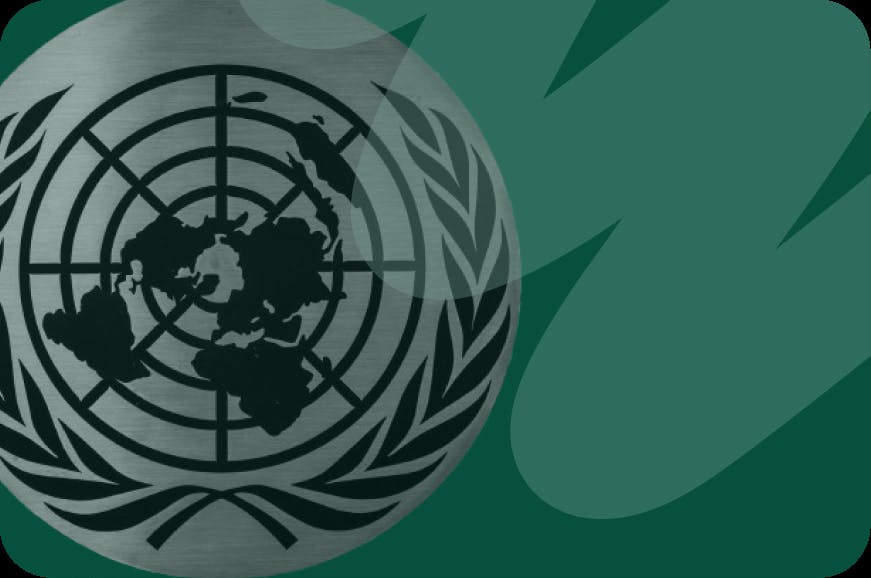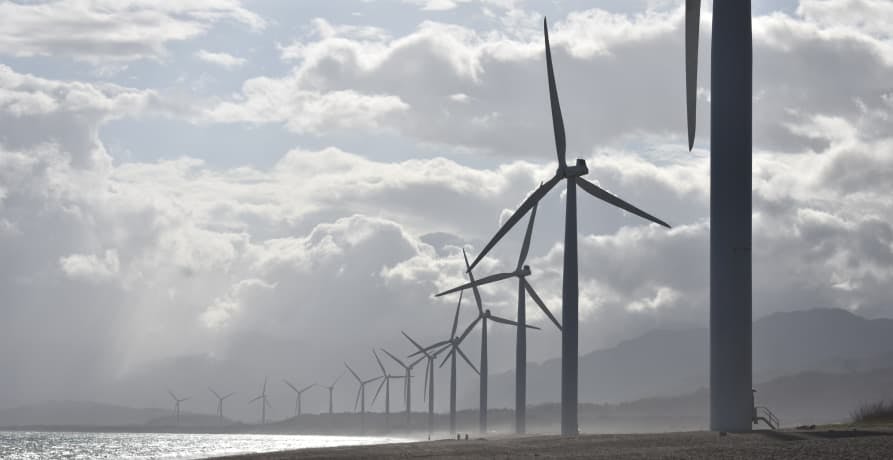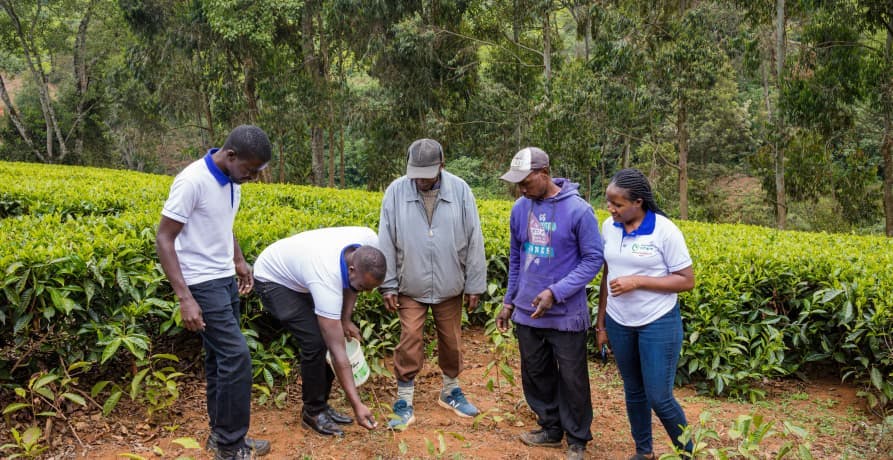ESG / CSR
Industries
International Cooperation: Key to Combating the Climate Crisis



From devastating wildfires to unprecedented floods, the climate crisis is reshaping life on Earth as we know it. But one thing is clear: climate change doesn’t respect borders. Whether it’s rising sea levels, prolonged droughts, or increasingly unpredictable storms, these challenges affect us all, and no nation can escape the consequences alone.
In this article, we'll explore why working together is the only viable solution to combating climate change. We'll uncover how global partnerships, shared technologies, and joint climate policies are already making an impact and why isolationist approaches fall short in addressing the scale of the crisis.
Why international cooperation is essential in the climate crisis
Shared causes, shared consequences
Greenhouse gas emissions produced in one country contribute to rising global temperatures everywhere. The atmosphere, oceans, and ecosystems are all deeply interconnected. Melting glaciers raise sea levels far from the poles. Warmer oceans fuel storms thousands of miles away. No country is immune.
Unequal impacts
Some nations contribute less to the crisis but face the harshest consequences. Africa, for example, accounts for just 3.8% of global emissions, yet it’s among the hardest hit, with increasing droughts, floods, and food insecurity. These countries need international support to adapt and build resilience.
The power of global collaboration
Without cooperation and a common understanding of responsibilities and goals, efforts to tackle climate change will be fragmented and fall short. International agreements like the Paris Agreement create a unifying framework that brings jurisdictions together to:
These collective efforts provide the best chance of limiting global warming, building resilience, and responding effectively to one of the most complex global challenges humanity has ever faced.
A unified response
How effective is international cooperation?
International cooperation is crucial in the fight against climate change, and when it works, it works remarkably well. But it’s not always straightforward. Some agreements have delivered measurable results, while others have suffered from a lack of enforcement, ambition, or political will.
Let's take a closer look at some of the key international frameworks created to facilitate international cooperation to tackle climate change:
Background: In the 1980s, scientists discovered that chlorofluorocarbons (CFCs) were causing a hole in the ozone layer – a critical shield that protects life on Earth from harmful UV radiation.
Action: In 1987, countries came together under the Montreal Protocol to phase out the production and consumption of CFCs and other ozone-depleting substances.
Results:
- Over 99% of ozone-depleting chemicals have been eliminated.
- The ozone layer is on track to recover by the 2060s, according to UNEP and NASA.
- The phaseout of these substances has achieved over 20 times the emissions reductions of the Kyoto Protocol’s first commitment period – and at a fraction of the cost.
This is often cited as the most successful multilateral environmental treaty ever signed, showing what’s possible when science, diplomacy, and political commitment align.
Adopted in 2015, the Paris Agreement is the cornerstone of today’s international climate efforts. It marked a turning point:
- Widespread participation: Nearly every country is party to the agreement.
Key goals:
- Limit global warming to well below 2°C and ideally 1.5°C.
- Require countries to submit and regularly update Nationally Determined Contributions (NDCs).
- Encourage technology sharing, climate finance, and capacity building.
Effectiveness to date:
- Created an enduring global framework for cooperation.
- Mobilised trillions in climate finance.
- Introduced a “ratchet mechanism” to raise ambition over time.
Challenges:
- Current pledges fall short – likely to result in 2.5–2.9°C of warming.
- Implementation has been inconsistent.
- No binding enforcement mechanisms – relies on peer pressure and transparency.
Kyoto Protocol (1997)
- First legally binding climate treaty for developed nations.
- Created the Clean Development Mechanism (CDM).
- Limited impact – many countries missed targets.
UNFCCC
- Established in 1992.
- Hosts COP climate conferences and supports ongoing coordination.
- Helps align national systems with global climate goals.
IPCC
- Scientific body – not policymaking.
- Provides the evidence base for international climate action.
Green Climate Fund
- Aims to channel $100 billion per year to developing nations.
- Focus on adaptation and sustainable development.
Global Methane Pledge (2021)
- Voluntary agreement to cut methane 30% by 2030.
- Signed by over 150 countries.
Is international cooperation effective?
When international cooperation is backed by strong political will, clear goals, and financial support, it works. The Montreal Protocol is proof of that.
But with climate change, the stakes are higher, the timeline is tighter, and the solutions are more complex. While the Paris Agreement is a monumental diplomatic achievement, the real test is in delivery, and so far, global progress is uneven and too slow.
Why isolationism doesn't work
In the face of a global crisis like climate change, isolationism doesn’t work. In fact, it’s not just ineffective, it’s actively counterproductive.
Climate change knows no borders
Some political movements push for a focus on national interests over global cooperation. But climate change isn’t confined to one country. Emissions from one region affect weather patterns, sea levels, and ecosystems across the planet.
Isolationist policies ignore the interconnected nature of Earth’s climate systems and the deep economic and environmental links between nations.
No country can do it alone
Even the biggest emitters - China, the United States, and the European Union - can’t solve the crisis without working together. Fragmented efforts will always fall short of what’s needed.
And beyond these powers, developing nations play a crucial role. Many lack the resources to adapt or decarbonise on their own. They need technology transfers, climate finance, and shared expertise, all of which only happen through international cooperation.
Isolationism holds back innovation and growth
Global collaboration isn’t just about emissions, it’s also about economic opportunity. Countries investing in clean technology and enforcing high regulatory standards are building new industries and creating jobs. When nations work together, they:
Isolationism slows all of this down and leaves countries less competitive in the green economy.
Supply chains are global
Most climate solutions depend on international supply chains. A single solar panel might involve:
Restricting global cooperation makes these systems less efficient, driving up costs and delaying progress.
Only through international cooperation can we unlock the scale, speed, and solidarity needed to safeguard the planet.

Why sharing knowledge and technology is essential
Collaboration drives faster innovation
When countries work together, they:
This kind of exchange doesn’t just speed things up, it also delivers better outcomes by making progress more equitable and efficient.
The Breakthrough Agenda: a blueprint for action
Launched at COP26, the Breakthrough Agenda is a powerful example of how international collaboration can drive real-world results.
Led by the IEA, IRENA, and UN Climate Champions - in collaboration with a range of global partners - the initiative focuses on five key sectors responsible for over 60% of global emissions:
Its mission? To make clean technologies in these sectors the most affordable, accessible, and attractive options worldwide by 2030.
Technology transfer: scaling solutions globally
One of the Breakthrough Agenda’s most valuable components is technology transfer, where leading nations share breakthroughs with others. This sharing reduces the duplication of efforts, lowers barriers to entry, and ensures that innovations and other forms of practical support can reach those who need them most.
Knowledge matters as much as tech
While access to technology is critical, knowledge sharing is equally vital, especially for developing countries facing the harshest climate impacts.
These countries need expertise in:
By sharing best practices, research, and policy models, international initiatives can boost resilience where it’s needed most. Civil society actors – including NGOs, local networks, and educational institutions – are often key players in this knowledge transfer, helping tailor global insights to local realities.
The Breakthrough Agenda helps bridge these gaps, not just by circulating ideas and innovations, but by building the policy and financial foundations that make global deployment possible.
International cooperation and climate finance
While sharing technology and knowledge is essential in the fight against climate change, financial cooperation is the foundation that makes action possible.
A historic imbalance
Countries in the Global North (including the United States and EU members) are responsible for around 79% of global CO₂ emissions since the 19th century. Meanwhile, Africa contributes just 3.8% of global emissions, yet faces some of the harshest climate consequences, including droughts, floods, and food insecurity.
The IPCC estimates that individuals in developing countries are 15 times more likely to be affected by climate-related disasters than those in wealthier nations.
Climate finance: what exists?
To address this imbalance, a range of international climate finance mechanisms has been created:
Green Climate Fund (GCF)
Supports low-carbon and climate-resilient projects in developing countries. So far, it has mobilised over $10.3 billion.
Adaptation Fund (AF)
Finances projects that help communities adapt to changing climate conditions, from coastal protections to sustainable agriculture.
Loss and Damage Fund
Established at COP27, this fund helps vulnerable countries recover from irreversible climate impacts like sea-level rise, floods, and wildfires.
Broken promises
In 2009, developed nations pledged to provide $100 billion annually in climate finance to developing countries by 2020.
The target was missed in 2020 and 2021
It was only met in 2022, years behind schedule
Trust has eroded, making climate negotiations at events like COP28 more difficult
The Loss and Damage Fund faces a particularly stark gap. While the estimated need is $400 billion per year, current pledges total just $661 million, barely a fraction of what’s required.
Private sector: the missing piece?
Public funds alone won’t be enough. Many hoped that international institutions like the International Monetary Fund and the World Bank could use public money to de-risk investments and attract private capital into developing countries.
But so far, progress has been limited:
Trillions in private finance across the financial sector remain largely untapped
Regulatory and political risks in developing countries continue to deter investment
Projects often lack the bankability or scale to appeal to global capital markets
A double standard
What makes the situation even more difficult for developing nations is the contradiction in global finance priorities.
In 2022 alone, the G20 provided over $1 trillion in fossil fuel subsidies
That’s more than ten times what developing countries have received for climate resilience
This stark imbalance fuels frustration at climate summits, where vulnerable countries continue to demand greater accountability and equity from wealthier nations.
Where is international cooperation delivering results?
We've already explored the high-level frameworks, like the Paris Agreement and climate finance mechanisms, that lay the foundation for global climate action. But international cooperation isn’t limited to treaties and funding pledges.
In practice, collaborative efforts across key sectors are already driving real-world change. From decarbonising heavy industry to scaling up electric vehicles and making agriculture more climate-resilient, these joint initiatives show how cooperation translates into measurable progress.
Steel production accounts for roughly 7–9% of global emissions, but recent international cooperation is starting to push the sector towards emissions reduction.
Through partnerships formed under the Breakthrough Agenda, countries have begun aligning standards for low-emission steel, helping manufacturers adopt greener processes. Shared research, investment coordination, and harmonised policy signals are helping to bring near-zero emission steel to market faster.
This is a critical development in one of the world’s hardest-to-abate sectors and a clear sign that collective action can unlock change at scale.
The electric vehicle (EV) market is another area where global cooperation is paying off.
In 2023, EVs made up 18% of global car sales, up from just 2% five years earlier. International coordination on charging infrastructure, regulations, and supply chains has helped reduce costs and improve availability.
Leading countries have also shared incentives and R&D to accelerate uptake.
The result? A faster shift away from fossil fuel vehicles and a more competitive global EV market.
Agriculture is both a victim and a contributor to climate change. But international partnerships and bilateral agreements are helping to protect food security while cutting emissions.
Initiatives like the Global Alliance for Climate-Smart Agriculture are:
- Developing drought-tolerant and flood-resistant crops
- Promoting sustainable land and water management practices
- Sharing techniques to reduce methane and nitrous oxide emissions from farming
These efforts are especially vital in regions facing hunger, poverty, and worsening climate extremes, and they demonstrate how knowledge and resource sharing can improve resilience on a global scale.
Many countries in the Global South are also emerging as leaders in agricultural innovation. Nations like India, Kenya, and Brazil are pioneering approaches at the regional level in climate-resilient farming, agroforestry, and off-grid irrigation systems that offer valuable lessons for others, showing that solutions aren’t just flowing North to South, but also South to South.

What’s holding international cooperation back?
Despite major frameworks and growing urgency, climate cooperation at the global level continues to fall short, not just because of ambition gaps, but because of structural and political barriers that make progress uneven and difficult to sustain.
Some of the biggest challenges include:
These barriers don’t just slow cooperation, they weaken the sense of shared responsibility that’s essential for global climate action.
Recommendations for strengthening international cooperation
If we’re serious about keeping climate goals within reach, then international cooperation needs a major upgrade. That means stronger commitments, clearer accountability, and fairer systems that ensure no country is left behind.
So what’s holding us back, and how can we fix it? Here are some of the biggest opportunities to make global cooperation more effective, rooted in fundamental principles of fairness, ambition, and shared progress.
| Action | What it involves | Who should lead |
|---|---|---|
|
Make climate pledges binding
|
- Shift from voluntary targets to legally binding commitments - Introduce enforcement mechanisms and clearer accountability - Ramp up ambition on a regular basis, with timetables and review points |
National governments, UNFCCC |
|
Boost global investment in green tech
|
- Scale up public finance from developed countries - Focus on clean energy, sustainable agriculture, and resilience infrastructure - Combine funding with tech transfers |
G7 nations, multilateral development banks |
|
Align trade and climate policy
|
- Set and enforce standards for emissions-intensive industries - Improve market access for climate-friendly products - Use trade policy and agreements to accelerate low-carbon solutions |
WTO, national trade ministries |
|
Improve transparency and data sharing
|
- Expand access to open-source climate and emissions data - Strengthen reporting mechanisms and legal assistance for climate litigation - Support shared collaboration platforms |
IPCC, international climate data bodies |
|
Reform global financial institutions
|
- Adapt IMF and World Bank lending to support climate investments - Prioritise green loans, debt relief, and climate resilience - De-risk private investment in developing economies |
IMF, World Bank, G20 |
|
Embed climate in wider cooperation
|
- Integrate climate into trade, diplomacy, and development policy - Support South–South cooperation and regional leadership - Foster cross-border infrastructure and knowledge exchange |
Partner countries, regional blocs, UN agencies |
Ultimately, strengthening international cooperation on climate change isn’t just about improving environmental outcomes, it’s about ensuring stability, equity, and long-term prosperity. Countries cannot afford to view climate action in isolation from other global goals. Aligning climate strategies with trade policy, public health, food security, and energy access can unlock co-benefits that make international action more politically and economically attractive.
It also means broadening the conversation. The future of global cooperation depends not only on traditional actors but also on emerging voices. Many countries in the Global South are leading the way in climate adaptation, renewable energy, and community-based solutions. Recognising and supporting these contributions is essential to building trust and fostering collaboration that is more inclusive, balanced, and effective.
How can Greenly help your company?
Tackling climate change requires action from every sector, including business. Greenly helps companies measure, manage, and reduce their carbon emissions with smart tools and expert guidance.
What Greenly offers:
- Carbon footprint tracking: Accurately monitor Scope 1, 2, and 3 emissions using Greenly’s user-friendly platform.
- Tailored reduction plans: Work with climate experts to identify priority actions that reduce emissions and support business growth.
- Supply chain decarbonisation: Address Scope 3 emissions by engaging suppliers, company service providers, and partners to shift to lower-carbon alternatives.
- ESG integration: Track progress toward sustainability goals and strengthen your ESG strategy with real-time insights.
Greenly makes climate action simple, actionable, and scalable, helping your company become a sustainability leader. Take the first step toward a net-zero future with Greenly.







